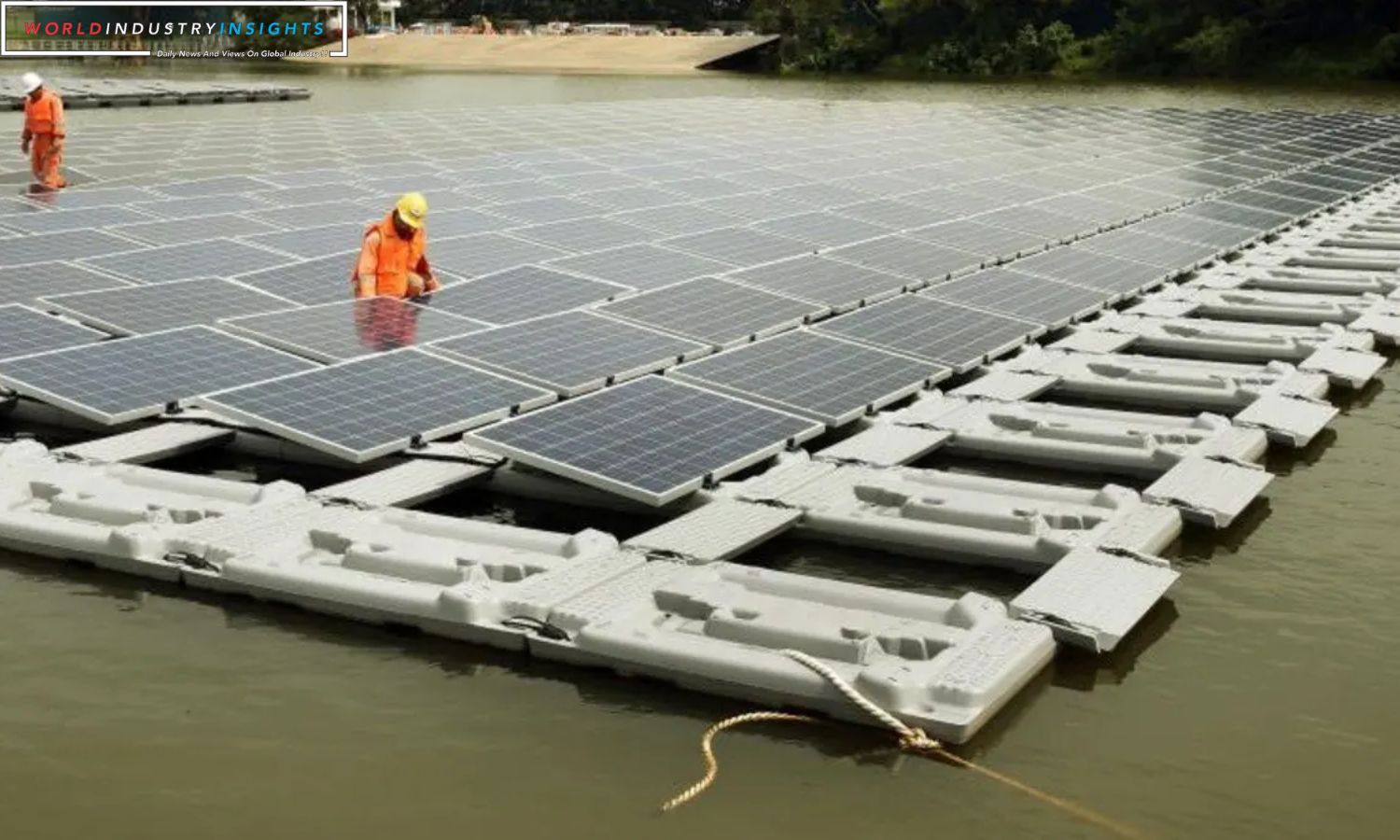Singapore Floating Power Plant: Singapore is about to take a giant leap forward in sustainable energy solutions with the launch of the Floating Living Lab in early 2024. Developed by offshore and marine company Seatrium, this unique floating power plant comes equipped with batteries that can refuel LNG vessels, charge electric harbor craft, and even provide electricity for remote islands.
What sets this project apart is its innovative energy storage system (ESS) integrated into a floating platform. With a maximum storage capacity of 7.5 megawatt hours (MWh), it can meet the electricity needs of over 600 households for a day on a single charge. The energy storage system is complemented by a smart energy management system powered by artificial intelligence and machine learning, enhancing its operational efficiency and energy distribution.
Singapore’s transition from a centralized energy sector dominated by large power plants to a more decentralized system driven by regional renewable power sources is well underway, and the Floating Living Lab is emblematic of this shift.
Also Read: Nuclear Project Progress: Unit 4 Set to Power Plant Vogtle by 2024
As Singapore pushes for decarbonization and renewable energy sources, this innovative offshore solution may be the answer to the country’s energy needs in the future. With land constraints posing a challenge to supporting the power grid, the 40% reduction in the ESS’s footprint is a significant development.
In addition to offering clean energy solutions, the Floating Living Lab features LNG bunkering facilities for harbor craft, charging infrastructure for fully electric vessels, and the potential for collaborative projects in the development of low or no-carbon fuels for ships and electrification of harbor vessels.
Singapore’s Energy Market Authority (EMA) and Seatrium, in partnership, have invested $10 million in this pioneering project, awarded to a consortium led by Univers (formerly known as Envision Digital International). As Singapore navigates its way towards a greener and more sustainable energy landscape, innovative solutions like the Floating Living Lab are paving the way for a cleaner and more efficient future.
Our Reader’s Queries
Is Singapore now home to one of the world’s largest floating solar farms?
Singapore has recently become the proud host of one of the largest floating solar farms in the world. This impressive feat has the potential to offset over 4,000 tonnes of carbon dioxide annually, which is equivalent to the greenhouse gas emissions of more than 900 passenger vehicles in a year. The innovative technology used in this project is a significant step towards a greener future, and it is a testament to Singapore’s commitment to sustainability.
How big is the floating solar system in Singapore?
Spread out across 10 floating solar panel islands, the solar farm covers 45 hectares, equivalent to around 45 football fields. With over 122,000 solar panels, it occupies one-third of the reservoir’s surface.
How much did the floating solar farm cost Singapore?
The Tengeh Reservoir Solar PV Park is a remarkable floating solar project that spans across 45 hectares. It generates a whopping 77,300MWh of electricity, which is enough to power 12,500 households with clean energy. This project is a significant step towards reducing carbon dioxide emissions, offsetting a staggering 577,000t of CO2 annually. The project cost is $120.507m, making it a worthwhile investment in the future of sustainable energy.
Which country has the largest floating solar power plant?
Not only is it the biggest floating solar project in Indonesia, but it’s also the largest of its kind to be constructed in a hydropower reservoir. With a water depth of 100 meters, water level fluctuation of 18 meters, and a 50-meter difference in water bottom elevation, this project is truly one-of-a-kind.


